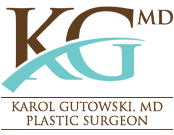TRANSCRIPTION
Breast reconstruction is a physically and emotionally rewarding procedure for a woman who has lost a breast due to cancer or other conditions. The results of breast reconstruction can approximate a natural appearance and feel and can greatly improve a woman’s self image, self confidence and quality of life.
Breast reconstruction is surgery to recreate a breast that has been partially or fully removed using techniques of tissue expansion and the placement of a breast implant, flap techniques that use a woman’s own tissue to create a breast mound or a combination of procedures. The nipple and areola are reconstructed using flap, grafting and other techniques. While breast reconstruction can effectively rebuild a woman’s breast, the results can be highly variable.
A reconstructed breast will never feel the same as the breast it replaces. Visible scars will always be present on the breast whether from reconstruction or a mastectomy and the use of flap techniques will leave scars at the donor site such as the abdomen or back.
Through the efforts of the American Society of Plastic Surgeons and breast cancer support groups, insurance companies are now required by federal law to provide coverage for breast reconstruction following mastectomy and any related procedures on the opposite breast. Pre-certification may be required.
This program presents an overview of breast reconstruction. It is not a substitute for a complete consultation with a plastic surgeon certified by the American Board of Plastic Surgery or The Royal College of Physicians and Surgeons of Canada. Breast reconstruction may begin at the time of mastectomy or may be delayed until a woman has healed from mastectomy and recovered from any additional cancer treatments. In other cases such as congenital abnormalities of the breast, the appropriate timing of reconstruction will be recommended by your plastic surgeon.
Good candidates for breast reconstruction are women able to cope with the diagnosis of breast cancer and treatment. In addition, good candidates for breast reconstruction do not have additional medical conditions or other illnesses that may impair healing and have a positive outlook and realistic goals for restoring one’s breast and body image. Some flap procedures may not be appropriate for some women with conditions such as obesity, heart disease and diabetes or for women who smoke.
A consultation with a board certified plastic surgeon, a member of the American Society of Plastic Surgeons who may also be a member of the American Society for Aesthetic Plastic Surgery, is the first step to learn how breast reconstruction can restore your breast’s appearance. A consultation is designed to fully educate you about breast reconstruction with a discussion of your goals, the options available in your breast reconstruction surgery, the likely outcomes of breast reconstruction surgery and potential risks and complications. Your surgeon will also describe the course of treatment recommended for you and answer your questions.
During a consultation, you will be asked to share your expectations for breast reconstruction and your personal health history. Full disclosure of your health history is important to your safety. You must also be candid about current medications you may be taking, the use of vitamins and herbal supplements and alcohol, tobacco and drug use.
By making the decision to consult with a board certified plastic surgeon, and following all of the instructions you are given, you are taking an important step in helping to assure your safety. A board certified plastic surgeon is a physician who is specifically trained in plastic surgery of the face and entire body. Prior to your procedure, you will be asked to sign informed consent documents. These documents assure your plastic surgeon that you fully understand the procedure you will undergo and potential risks and complications. In addition, you must commit to precisely following all of the instructions you are given.
Instructions include presurgical considerations such as testing and medications, day or surgery instructions and medications and specific information related to the use of anesthesia. The surgical techniques involved in breast reconstruction are often carried out in stages and are most often performed in a hospital setting with a possible short hospital stay. Members of the American Society of Plastic Surgeons and The American Society for Aesthetic Plastic Surgery, are required to use only accredited surgical facilities. Initial procedures are more commonly performed under general anesthesia or in some cases, may be performed at the time of mastectomy. Flap techniques may result in a more natural feeling breast and are performed when little tissue or muscles remains following mastectomy and will result in scars at both the breasts and donor site and require a lengthy recovery.
A TRAM flap uses donor fat, muscle and skin from a women’s abdomen to reconstruct the breast. The flap may remain tethered to the original blood supply and is tunneled up through the chest wall or the flap may be completely detached and formed into a breast mound using microsurgical techniques. In some cases where a TRAM flap is not recommended, a free flap using fat, muscle and skin from the buttocks, abdomen or thigh may be used to reconstruct the breast. This requires full detachment from the donor site and blood supply and special microsurgical techniques.
A Latissimus Dorsi Flap tunnels muscle, fat and skin attached to it’s original blood supply under the tissue of a woman’s back to the chest wall. Occasionally, the flap can reconstruct a complete breast mound, but more commonly provides the muscle and tissue necessary to cover and support a breast implant.
While a few cases of mastectomy leave sufficient tissue on the chest wall to cover and support a breast implant, most do not. The alternative to a flap and breast implant combination is the use of tissue expansion. This requires an expander to be placed underneath the chest wall, skin and muscle that is periodically filled with sterile saline solution over many weeks until an appropriate sized breast mound is obtained. Once filled, the expander is sealed and serves as the breast implant or it may be replaced by a permanent breast implant in a second surgical procedure.
In order to achieve symmetry between both breasts, your plastic surgeon may prescribe breast lift, breast reduction or breast augmentation to the opposite or unaffected breast. In general, the opposite or unaffected breast. In general, complications from plastic surgery of the breast include bleeding, poor healing at the incision sites, thick discolored or raised scars, changes in nipple sensation and infection. Women who smoke are at increased risk of poor healing and are therefore advised to stop smoking for several weeks before and after surgery.
In addition with flap techniques, there is also the possibility of loss of sensation at the breast and donor sites and the remote chance of partial or full loss of the flap due to poor healing. The use of breast implants in reconstruction may result in visible wrinkling of the skin over the implant, infection or the development of a condition called capsular contracture. Following flap techniques, the insertion of an implant or tissue expander, gauze and bandages will be applied to the incisions. A small, thin tube may be temporarily placed under the skin to drain any excess fluid that may accumulate. Before being released, you and an accompanying family member, friend or caregiver, will be given specific instructions that may include how to care for the breast following surgery, medications to apply or take orally to aid healing and reduce the risk of infection, specific changes to watch for at the surgical site or in overall health and when to follow up with your plastic surgeon.
In general, your recovery from plastic surgery of the breast may include swelling and discomfort at the incision sites and in breast tissue overall. Discomfort is common and can be controlled with medication. You should begin light walking as soon as possible following your breast surgery. In addition, a support bra may be recommended for the first few weeks following breast surgery. Initial wound healing may take one to two weeks at which time any sutures will be removed if necessary. You should be ready to return to work or normal activity within a few weeks following breast reconstruction if you feel ready, but do not engage in any heavy lifting or vigorous exercise until your plastic surgeon gives you clearance to do so.
Healing will continue for several weeks as swelling resolves and breast shape and position settle. Secondary procedures will reconstruct your nipple and areola. Breast reconstruction following mastectomy will help you feel physically and emotionally more positive about your self image. Careful monitoring of breast health through self exam, mammography and other diagnostic techniques is essential to your long term health. Over time, breast sensation may return. In addition, scars will improve but will never disappear completely.
These are among the trade-offs of breast reconstruction. But to many women, these trade-offs are small when compared to the large improvement in a woman’s quality of life and the ability to look and feel whole again. Choosing to undergo breast reconstruction or any plastic surgery procedure whether cosmetic or reconstructive is an important decision, so is selecting a plastic surgeon.
The American Society of Plastic Surgeons and The American Society for Aesthetic Plastic Surgery have prepared this educational program to supplement your personal consultation with a plastic surgeon who is certified by The American Board of Plastic Surgery or The Royal College of Physicians and Surgeons of Canada. Plastic surgeons with this certification have completed approved surgical training and rigorous examinations in plastic surgery including both cosmetic and reconstructive procedures of the face and entire body.









